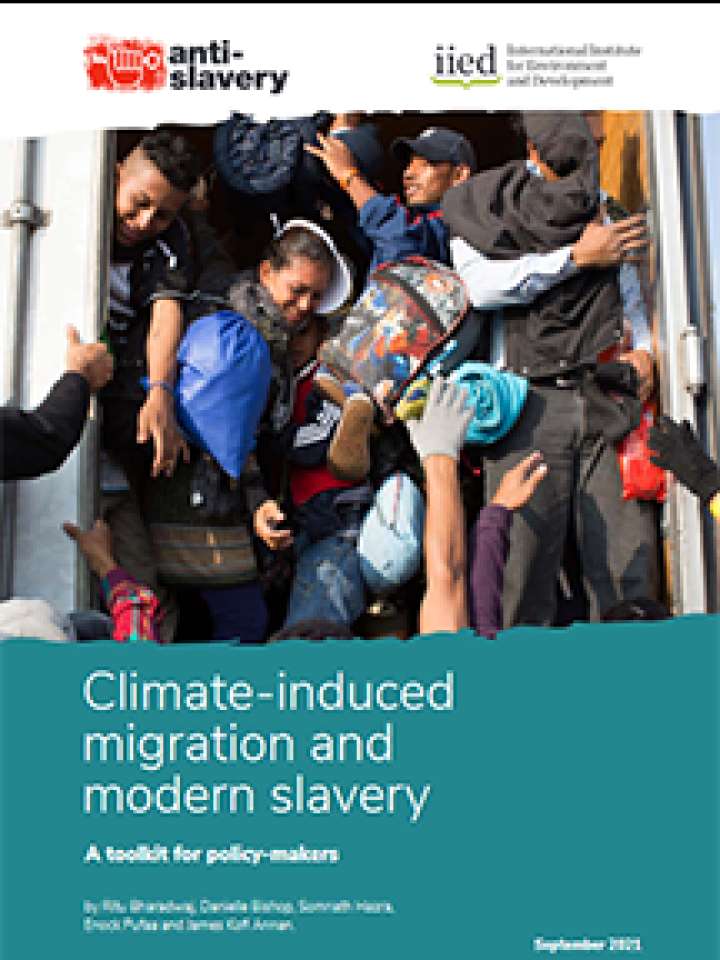Climate-induced migration and modern slavery
This report discusses how climate change and climate-induced migration heightens existing vulnerabilities of slavery. Drivers of vulnerability to modern slavery are complex and impacted by many layers of risk. While several socio-economic, political, cultural and institutional risks shape
vulnerability, they are increasingly considered to be made worse by climate change impacts and environmental degradation.
Climate-induced displacements are becoming unavoidable. The rise of sea levels, salination and flooding are already forcing entire coastal communities – in countries such as the Solomon Islands, Vanuatu and Sierra Leone – to relocate. And as climate shocks are set to intensify, many more millions will be displaced by climate change in the coming decades. The World Bank estimates that by 2050 climate change will force more than 143 million people in sub-Saharan Africa, South Asia and Latin America from their homes.
Climate change policies increasingly recognise climate-induced migration and displacement as an issue. The Cancún Adaptation Framework (CAF), adopted during COP16 under the United Nations Framework Convention on Climate Change (UNFCCC) in 2010, provides a conceptual framework to navigate the complexities of climate mobility. CAF recognises three modes of mobility due to climate impacts – migration, displacement and planned relocation4 – allowing for specific climate policies aligned with the distinct features, mobility patterns and outcomes of each impact.5 In 2015, the Paris Agreement on climate change was an unprecedented development of action on migration and climate with the formal inclusion of ‘migrants’ in its Preamble.
Explore further
